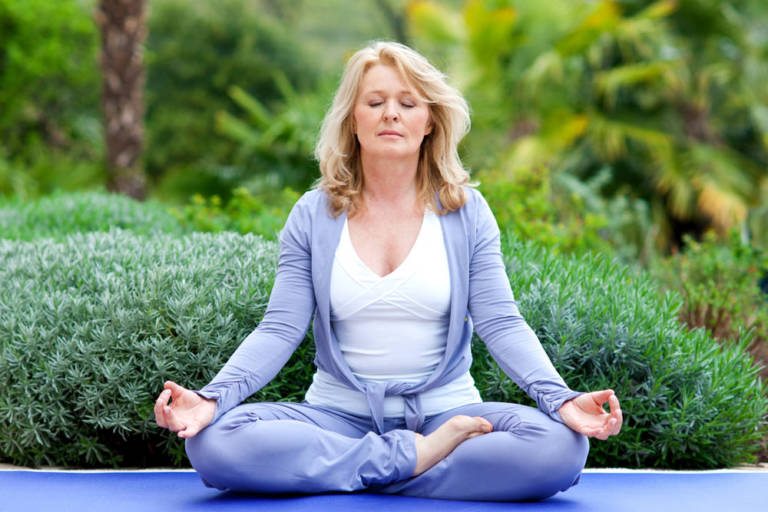

We live in a very stressful world, which has left many people looking to find a measure of inner peace amidst all the chaos and confusion. Without inner peace it is impossible to attain true happiness or freedom from the stress of daily life.
Over the ages people have turned to different methods for trying to find inner peace, and while activities such as exercise and positive thinking do work there is an easier way. Those who have made meditation a part of their life have found that it is one of the most successful methods to achieve inner peace for themselves.
It doesn’t matter if you have tried meditation before or only heard about it. By embracing the following techniques you can experience contentment and relaxation like never before and bring peace to your existence.
Pick A Time That Works Best For You
Because everyone has a daily schedule they must follow, it can be hard to find a good time to meditate. When choosing when you want to meditate, it should be at a time that is convenient for you and doesn’t interfere with your schedule, as this can cause a distraction. The best times to meditate are either early in the morning or late in the evening when everything is calm and peaceful.
However, some people also prefer meditating either around sunrise or sunset. Because there are so many variables it is best to stick to a time that is convenient for you. For example, if you find yourself falling asleep when meditating in the evening because you’ve had a long day at work it is probably better to meditate in the morning after you’ve had a good rest.
Find A Good Spot To Meditate
Although meditation can be done virtually anywhere, you need a quiet, comfortable place where you can remain undisturbed for at least ten to twenty minutes. Ideally you should use the same place every day for meditation, as this will make it easier for it to become a good habit.
If your daily meditation spot constantly changes, it will just cause added stress and worries when you have to figure out where to go. Once you have chosen the location for your meditation it is also better to stick to a specific spot in that location. For example, if you opt to meditate in a spare room in your house you should always use the same spot on the floor.
Doing so will train your mind to recognize that spot as a special place where you can go to find your inner peace. In turn, it will allow you to move to a meditative state much faster than if you choose a new spot every time. This is also why it is better to choose a location that you wouldn’t otherwise use for anything else or visit that often.
Eliminate All Distractions
Depending on where and when you meditate it might not always be possible, but ideally you should eliminate as many distractions around you as possible. This means putting your phone on silent, switching off the computer, television or radio and being away from other people.
By ensuring that your meditation area is quiet you’ll be spared from distractions and will be able to enjoy a deeper experience. If there is no way to eliminate all external noises you can use a music player to cancel these out with meditative music.
Some people also find the sound of water running to be very calming and peaceful. If you are fortunate enough to meditate in a location that is close to nature you can let the ambient sounds around you help you to enter a relaxing meditative state.
Get Comfortable
Once you are satisfied with your spot to meditate it is time to get comfortable and sit with a good posture. If you are flexible enough, you can sit in the lotus position by sitting cross-legged with your right leg over the left, but some people also prefer to kneel. Depending on your age, fitness level and flexibility you might not feel comfortable sitting on the floor.
If this is the case you can also sit on a sofa or chair. It is better to avoid your bed, though, as your mind already associates it with sleeping, not meditating. Just make sure that you are comfortable enough to breathe naturally and your blood can circulate freely. You can also perform a few stretches before meditating to relax your body and muscles.
Once you are comfortable, place your hands on your lap with your palms face upwards while your thumbs are touched together lightly. Next, close your eyes without squeezing them tightly or forcefully.
Focus On Your Breathing
With your eyes still closed, clear your thoughts and turn your focus to your breathing. Continue to breathe in and out in a slow, steady rhythm. If at any point you feel like you are starting to lose your focus try to concentrate on your breathing again. It is normal for thoughts to pop into your head while meditating, but there is no need to try to resist them.
However, don’t dwell on these thoughts either or attach to them. When you first start meditating you might find that your mind is quite unruly, but over time it becomes easier to find clarity and peacefulness. Instead of getting frustrated, simply acknowledge the fact that your mind wandered and then renew your focus on your breathing.
Recite A Mantra
Some people find that reciting a mantra while meditating is beneficial for their focus and concentration while also helping to dispel stray thoughts from interfering. There are no rules for what mantra you should recite, as long as the words or phrase produces specific feelings.
While continuing to focus on your breathing, recite your mantra either in your mind or out loud. Doing so will help prevent your mind from wandering.
Do Not Be In A Hurry
Even if it initially feels like the meditation is not working or your mind is continually wandering, don’t be too quick to give up and open your eyes. Instead, try to take it easy and continue to meditate for at least 10-15 minutes.
As with anything, meditation is a process that becomes easier and more natural with regular practice. 
Useful Tips
If you feel yourself getting drowsy or even falling asleep while trying to meditate it could be because your stomach is full. Try to schedule your meditation for a time when you are not full.
Also, don’t worry that you are doing meditation “wrong”, as this will only make you more tense and anxious. Accept that it is a learning experience and be grateful that you are doing it.

